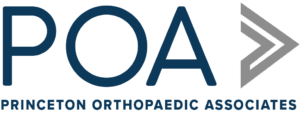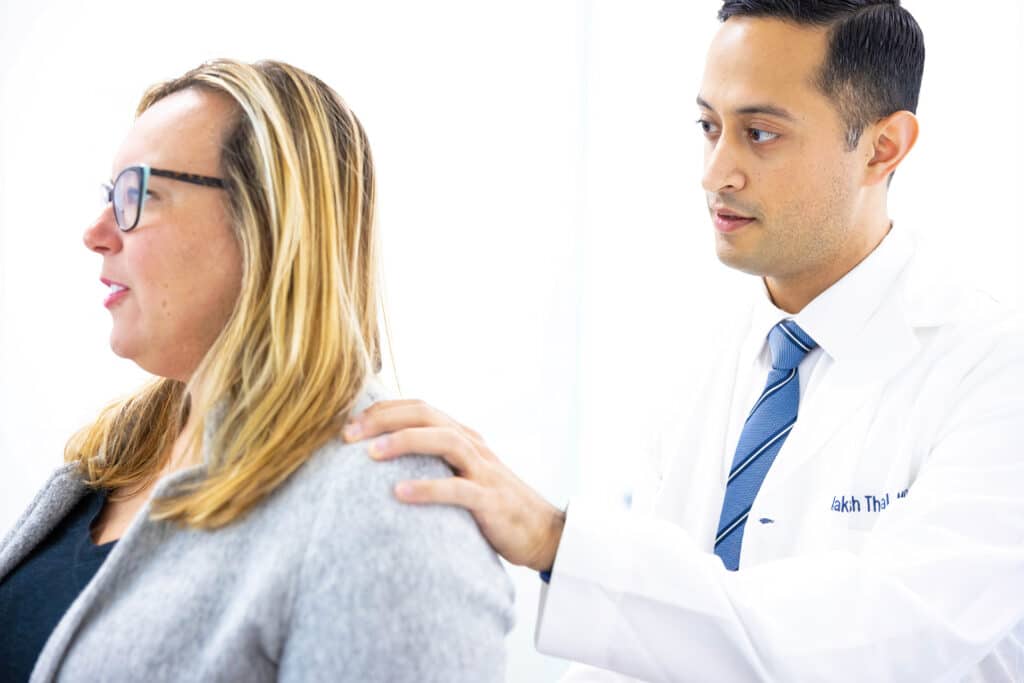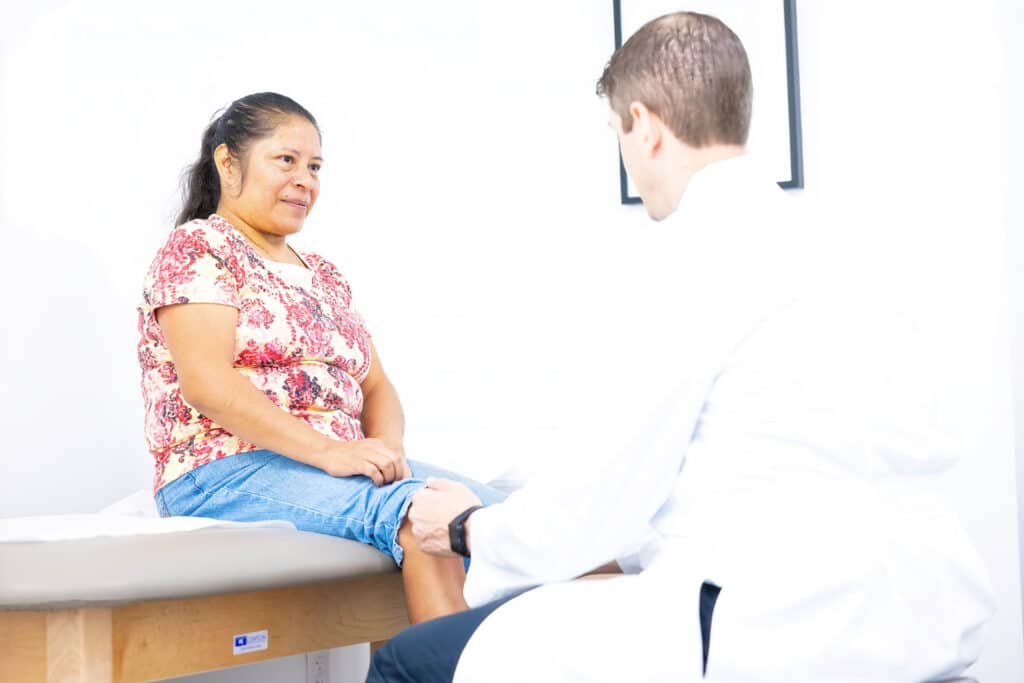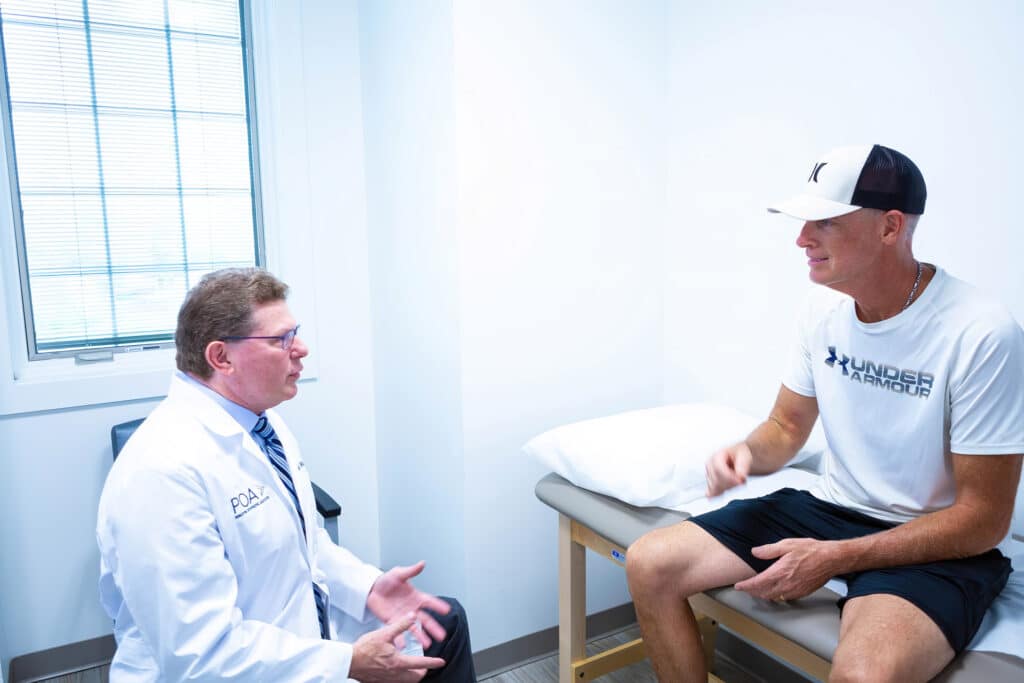
Physician Assistants
Physical & Occupational Therapists
KneeMRI ScansNon-OperativePhysiatry
Physical Therapy
Podiatry
Spine
Sports Medicine
TraumaUrgent Care
X-Ray Imaging

Throwing an object over and over, such as a ball or Frisbee, can eventually cause the elbow to be overworked and injured. While this type of injury can happen to anyone, it is especially common for those who play sports that involve throwing or swinging objects (baseball, tennis, golf, etc.).
The reason this happens is because the force of action when throwing centers on the inner elbow. Overworking this joint can cause:
Tennis elbow is a painful condition in which the tendons on the outside of your elbow become inflamed due to overuse. It can begin gradually, or suddenly after a specific incident. It may feel like an extension from your shoulder or wrist and can hurt when you flex your wrist. Do not confuse this with golfer’s elbow, which is inflammation of any tendon that connects your forearm muscles to the inside of your elbow!
Pitcher’s elbow is typically thought of as a baseball injury, but it can happen to anyone. It happens when the joint at the elbow area where the muscle and bone meet become strained during a strong overhand motion (like making an overhead throw as in a pitcher throwing a ball). Over time, this motion can cause damage and pain from overuse.
Golfer’s elbow is similar in nature to tennis elbow. It is, however, a different type of pain and your physiotherapist will be able to tell you more about it and how he or she can help you deal with the physical symptoms using massage, heat and exercise.
Although each of the different throwing injuries of the elbow are distinct, they have many similar symptoms, including:
What Is Tommy John Surgery?
Tommy John Surgery, named in honor of the late Baseball Hall of Fame pitcher who was the first to undergo this procedure, is a common orthopedic surgery that reconstructs damages within an elbow by replacing an injured or torn ligament with a tendon from another body part.
This is a relatively common surgery used to repair torn ulnar collateral ligaments in the elbow. An athlete's ulnar collateral ligament can tear due to repetitive use or trauma and our surgeons can replace this with a tendon from elsewhere in the body. The ultimate goal of this procedure is to stabilize an injured elbow, reduce or entirely resolve pain, and return patients to their pre-injury status either for professional or amateur athletes. Fortunately, it is highly successful at doing just that and has helped thousands of people get back into sports without sacrificing their careers as an athlete!



Throwing injuries of the elbow have two primary causes:
For the average person, major elbow injuries are rarely caused by stressing the joint during a throwing motion. But in the case of a professional athlete who may throw a ball 70 to 100 miles per hour, each throw requires a high level of force to be placed on the elbow joint. This repeated motion on this type of scale can lead to inflammation (swelling), cartilage injuries, bone spurs and eventually, tearing the medial collateral ligament (MCL) – otherwise known as the ulnar collateral ligament (UCL). This ligament should not be confused with the one in your knee!
When you tear your MCL, you will still have a full range of motion and the ability to throw, but not be able to exert significant force. Your MCL may be weakened over time due to gradual attenuation (weakening) of the ligament. It is important to know this because it gives you the knowledge that if changes in your throwing motion occur, it is likely an indication that you are harming your elbow's joints and surrounding soft tissue if change isn't made promptly.
To discover whether you have an injury of the elbow, your doctor will look at your forearm and ask you to move your fingers, hand, wrist, and arm. If you're unable to move any of these areas on account of pain then it is likely that you do suffer from an elbow injury. However, x-rays might be recommended in order to rule out other problems which may not be related to the elbow but are instead symptoms of another illness or injury.
There are steps you can take to reduce risks of throwing injuries in the elbows. Some of these include:

© 2023 Princeton Orthopaedic Associates. The contents of princetonorthopaedic.com are licensed under a Creative Commons Attribution-NonCommercial 4.0 International License. Copying without permission is strictly forbidden.